Yesterday we took note of the spat between Texas Governor Rick Perry and freshman Senator Rand Paul over Paul’s foreign policy. Needless to say the exchange wasn’t very enlightening because Paul, unable to either offend his father’s sycophants or describe a foreign policy for the only superpower relegated himself to attacking positions Perry had not taken (e.g. Perry has not advocated sending troops to Iraq) and comparing himself to Reagan.
Both are tried and true Paul rhetorical devices. Anyone who disagrees with his nebulous proposals is accused of advocating military action involving ground troops. And Paul=Reagan. A Google search for “Rand Paul” + Reagan gives you 2.82 million hits.
When one considers Reagan’s actual record, a record that I’m mostly fond of, you find very few similarities.
Stature
Let’s get this one out of the way. Paul is not a thinker. Paul was elected as a result of conservative hostility towards Mitch McConnell’s ham-handed efforts to handpick the second senator from Kentucky. By the time Reagan was elected he had been the successful president of the Screen Actors Guild, he’s served as a commissioned officer in the Army Air Force, he’d been a successful two-term governor of California, he’d written and spoken extensively on US foreign and domestic policies, and he’d nearly beaten Gerald Ford for the 1976 presidential nomination.
This alone separates Paul from Reagan.
Economics
For better or worse, Paul and Reagan could not have been further apart on the economy. Paul knows this, he has a long record of disparaging Reagan’s economic record.
A compilation of several videos of Paul speaking, some going back as far as 2007, MoJo’s mashup shows Paul repeatedly criticizing Reagan for being a phony fiscal conservative. As if that weren’t bad enough, the video also shows Paul repeatedly comparing Reagan’s spending policies with those of the hated Jimmy Carter, history’s greatest monster, and finding the latter’s to be superior.
“The deficit went through the roof under Reagan,” Paul says in a video from 2007 showing him speaking on his father’s behalf. “So how long did it take Ron Paul to figure out that the guy he had liked, endorsed, campaigned for, campaigned for him [wasn’t fiscally conservative]?” Paul asked. “The very first [Reagan] budget. Ron Paul voted ‘no’ against the very first Reagan budget… Everybody loved this ‘great’ budget. It was a $100 billion in debt. This was three times greater than Jimmy Carter’s worst deficit.”
In another video, this one from 2008, Paul damns Reagan with faint praise, saying the conservative hero’s “philosophy was good” but that he didn’t have “the energy or the follow-through to get what we needed.”
[youtube]http://youtu.be/QQ6u960RL7Q[/youtube]
Foreign Policy
Now that we have stature (or “gravitas,” if you will) and economic policy out of the picture as points of comparison. Let’s take a look at foreign policy, the area in which Paul boasts his Reaganesque style.
It is really difficult to parse out what Paul believes about US foreign policy. For instance, on Crimea in the span of only a few days he flip-flopped from blaming the crisis on the United States (blaming the United States is a reflexive action by Rand Paul) for “tweaking” Russia (presumably “tweaking”=asking that they observe international norms of behavior) to thumping his concave breast in anger.
He seems to think that the official doctrine of the Reagan administration was the Weinberger Doctrine. The Weinberger Doctrine, promulgated by Secretary of Defense Cap Weinberger (as an ironic aside, Weinberger, known in DC as “Cap the Knife” from his budget cutting days at OMB director and secretary of HHS presided over the largest peacetime military buildup in US history) was aimed specifically at avoiding another Vietnam-type involvement and specifically another Beirut-style deployment of American forces.The United States should not commit forces to combat unless the vital national interests of the United States or its allies are involved.
- U.S. troops should only be committed wholeheartedly and with the clear intention of winning. Otherwise, troops should not be committed.
- U.S. combat troops should be committed only with clearly defined political and military objectives and with the capacity to accomplish those objectives.
- The relationship between the objectives and the size and composition of the forces committed should be continually reassessed and adjusted if necessary.
- U.S. troops should not be committed to battle without a “reasonable assurance” of the support of U.S. public opinion and Congress.
- The commitment of U.S. troops should be considered only as a last resort.
If you follow Paul’s writings on foreign policy you’ll see one or more of these principles constantly referred to. For instance:
Those who say we must re-engage in Iraq are also forgetting an important part of the Weinberger Doctrine: “U.S. troops should not be committed to battle without a ‘reasonable assurance’ of the support of U.S. public opinion and Congress.” To attempt to transform Iraq into something more amenable to our interests would likely require another decade of U.S. presence and perhaps another 4,000 American lives—a generational commitment that few Americans would be willing to make.
This is interesting but doesn’t really mean much. As Dan Henninger writes in the Wall Street Journal:
As to the Gipper’s principles, Sen. Paul overstates reality when he suggests that the Weinberger Doctrine was Reagan’s doctrine. The Weinberger Doctrine described in Mr. Paul’s piece was Caspar Weinberger’s personal opinion. His speech occurred amid an internal Reagan administration debate about how to deal with a new and murderous global threat: terrorism flowing out of the Middle East.
“Cap’s doctrine,” Sec. Shultz wrote, “bore relevance to a major, conventional war between adversarial armed forces. In the face of terrorism, or any of the wide variety of complex, unclear, gray-area dangers facing us in the contemporary world, however, his was a counsel of inaction bordering on paralysis.”
While there was never a formal Reagan Doctrine, Ronald Reagan himself said enough and did enough to know where he stood. In his 1985 State of the Union, Reagan said, “We cannot play innocents abroad in a world that’s not innocent.”
The continual reference to the Weinberger Doctrine (later morphed to the Powell Doctrine) by Paul is more indicative of a man who either hasn’t considered the reality of the world or is fearful of offending his political base. I’m open to either explanation but it demonstrates an alarming level of lack of seriousness and this lack of principle leads to rather bizarre statements like:
Like Dwight Eisenhower, I believe the U.S. can actually be stronger by doing less.
Because “less” is not the same as “nothing.”
In his Politico article, Paul makes this case:
This is where many in my own party, similar to Perry, get it so wrong regarding Ronald Reagan’s doctrine of “peace through strength.” Strength does not always mean war. Reagan ended the Cold War without going to war with Russia. He achieved a relative peace with the Soviet Union—the greatest existential threat to the United States in our history—through strong diplomacy and moral leadership.
Reagan had no easy options either. But he did the best he could with the hand he was dealt. Some of Reagan’s Republican champions today praise his rhetoric but forget his actions. Reagan was stern, but he wasn’t stupid. Reagan hated war, particularly the specter of nuclear war. Unlike his more hawkish critics—and there were many—Reagan was always thoughtful and cautious.
But above all, he was strong. America must always be strong.
There is little to argue with here. The question is rather does Paul understand the actual history of the period. In this pullquote, Paul approvingly links to a piece by Peter Beinart in Foreign Policy magazine from 2010. Beinart, who was nine when Reagan was inaugurated and therefore an expert on Reagan, seems to have made a career out of deciding which politicians are like Reagan… or not. In this article Beinart is comparing George W. Bush. Presumably this is the part Paul liked:
In fact, Reagan was terrified of war. He took office eager to vanquish Nicaragua’s Sandinista government and its rebel allies in El Salvador, both of which were backed by Cuba and the Soviet Union. But at an early meeting, when Secretary of State Alexander Haig suggested that achieving this goal might require bombing Cuba, the suggestion “scared the shit out of Ronald Reagan,” according to White House aide Michael Deaver. Haig was marginalized, then resigned, and Reagan never seriously considered sending U.S. troops south of the border, despite demands from conservative intellectuals like Norman Podhoretz and William F. Buckley. “Those sons of bitches won’t be happy until we have 25,000 troops in Managua,” Reagan told chief of staff Kenneth Duberstein near the end of his presidency, “and I’m not going to do it.”
The difference, a critical one that Paul doesn’t seem to comprehend, is that the whole world thought Reagan would just as soon drop a nuke on them as look at them. From the same article:
That last phrase was the key. America’s enemies would pay the price, not the American people. Americans loved Reagan’s foreign policy for the same reason they loved the 1985 blockbuster Rambo, in which the muscle-bound hero returns to Vietnam, kicks some communist butt, and no Americans die. Reagan’s liberal critics often accused him of reviving the chest-thumping spirit that had led to Vietnam. But they were wrong. For Reagan, chest-thumping was in large measure a substitute for a new Vietnam, a way of accommodating the restraints on U.S. power while still boosting American morale.
Paul never talks about our enemies paying a price. His entire strategy is based around allowing the bad guys to kill some undetermined number of Americans before being roused from his marijuana-induced stupor.
Direct Military Actions Under Reagan
When one looks at direct military actions during the Reagan administration it is rather long:
- 1981 – El Salvador: After a guerrilla offensive against the government of El Salvador, additional U.S. military advisers were sent to El Salvador, bringing the total to approximately 55, to assist in training government forces in counterinsurgency.
- 1981 – Libya: First Gulf of Sidra incident, on August 19, 1981, U.S. planes based on the carrier USS Nimitz shot down two Libyan jets over the Gulf of Sidra after one of the Libyan jets had fired a heat-seeking missile. The United States periodically held freedom of navigation exercises in the Gulf of Sidra, claimed by Libya as territorial waters but considered international waters by the United States.
- 1982 – Lebanon: Multinational Force in Lebanon, on August 21, 1982, President Reagan reported the dispatch of 800 Marines to serve in the multinational force to assist in the withdrawal of members of the Palestine Liberation force from Beirut. The Marines left September 20, 1982.
- 1983 – Grenada: Operation Urgent Fury, citing the increased threat of Soviet and Cuban influence and noting the development of an international airport following a coup d’état and alignment with the Soviet Union and Cuba, the U.S. invades the island nation of Grenada.[RL30172]
- 1983–89 – Honduras: In July 1983, the United States undertook a series of exercises in Honduras that some believed might lead to conflict with Nicaragua. On March 25, 1986, unarmed U.S. military helicopters and crewmen ferried Honduran troops to the Nicaraguan border to repel Nicaraguan troops.
- 1985 – Italy: On October 10, 1985, U.S. Navy pilots intercepted an Egyptian airliner and forced it to land in Sicily. The airliner was carrying the hijackers of the Italian cruise ship Achille Lauro who had killed an American citizen during the hijacking.
- 1986 – Libya: Action in the Gulf of Sidra (1986), on March 26, 1986, President Reagan reported on March 24 and 25, U.S. forces, while engaged in freedom of navigation exercises around the Gulf of Sidra, had been attacked by Libyan missiles and the United States had responded with missiles.[RL30172]
- 1986 – Libya: Operation El Dorado Canyon, on April 16, 1986, President Reagan reported that U.S. air and naval forces had conducted bombing strikes on terrorist facilities and military installations in the Libyan capitol of Tripoli, claiming that Libyan leader Col. Muammar Gaddafi was responsible for a bomb attack at a German disco that killed two U.S. soldiers.[RL30172]
- 1987 – Persian Gulf: Operation Nimble Archer. Attacks on two Iranian oil platforms in the Persian Gulf by United States Navy forces on October 19. The attack was a response to Iran’s October 16, 1987 attack on the MV Sea Isle City, a reflagged Kuwaiti oil tanker at anchor off Kuwait, with a Silkworm missile.
- 1987–88 – Persian Gulf: Operation Earnest Will. After the Iran–Iraq War (the Tanker War phase) resulted in several military incidents in the Persian Gulf, the United States increased U.S. joint military forces operations in the Persian Gulf and adopted a policy of reflagging and escorting Kuwaiti oil tankers through the Persian Gulf to protect them from Iraqi and Iranian attacks. President Reagan reported that U.S. ships had been fired upon or struck mines or taken other military action on September 21 (Iran Ajr), October 8, and October 19, 1987 and April 18 (Operation Praying Mantis), July 3, and July 14, 1988. The United States gradually reduced its forces after a cease-fire between Iran and Iraq on August 20, 1988. It was the largest naval convoy operation since World War II. [my italics].
- 1987–88 – Persian Gulf: Operation Prime Chance was a United States Special Operations Command operation intended to protect U.S.-flagged oil tankers from Iranian attack during the Iran–Iraq War. The operation took place roughly at the same time as Operation Earnest Will.
- 1988 – Persian Gulf: Operation Praying Mantis was the April 18, 1988 action waged by U.S. naval forces in retaliation for the Iranian mining of the Persian Gulf and the subsequent damage to an American warship.
- 1988 – Honduras: Operation Golden Pheasant was an emergency deployment of U.S. troops to Honduras in 1988, as a result of threatening actions by the forces of the (then socialist) Nicaraguans.
- 1988 – USS Vincennes shoot-down of Iran Air Flight 655.
- 1989 – Libya: Second Gulf of Sidra incident. On January 4, 1989, two U.S. Navy F-14 aircraft based on the USS John F. Kennedy shot down two Libyan jet fighters over the Mediterranean Sea about 70 miles north of Libya. The U.S. pilots said the Libyan planes had demonstrated hostile intentions.
What should jump out at you is that Reagan, despite his aversion to war was never reluctant to use US military force to forward US strategic objectives without a direct threat to either the United States or its citizens.
“Tweaking” Our Enemies Under Reagan
Another complaint Paul routinely makes is that the US meddles in too many places. As noted above, the first of his rapidly evolving statements on Crimea faulted the United States for “tweaking,” nice word choice– usually body parts are tweaked not countries. During Reagan’s administration we funded the Afghan guerrillas fighting the Soviets (no, these were not al-Qaeda or “the Taliban”), we carried out an aggressive policy of arming the Nicaraguan contras to try to overthrow the communist regime in Managua. We funded and supported the UNITA and the FNLA in their insurgency against the communist sponsored Angolan government. In many other conflicts, not directly involving the USSR or its direct clients, like the Western Saharan War we provided arms and assistance.
Reagan was just as aggressive politically. Everyone knows about SDI, but he also pushed newer classes of nuclear weapons: Trident II (submarine) missile, the Ground Launched Cruise Missile, the Pershing II. Reagan spoke in terms of nuclear war as a viable strategic option:
Then, soon after his inauguration on January 20, 1981, President Reagan dramatically increased the American military budget (an effort, it was said, to “bankrupt the Soviet Union”). He sought to add each of those new nuclear weapons and delivery systems to the American arsenal, deployed new medium-range nuclear missiles in Western Europe, and began to contemplate a missile defense system that, from the Soviet perspective, could provide America with the ability to launch a nuclear first strike and defend itself against the remnant Soviet nuclear response. When his Arms Control and Disarmamant Agency director, Eugene Rostow, was asked whether the US and USSR could survive a full-scale nuclear exchange, he replied breezily: “The human race is very resilient.” And his vice-president, George H.W. Bush, as well as his top nuclear policy officials, spoke not about avoiding nuclear conflagration, but instead about “waging and winning” something they called a “protracted nuclear war,” in which, they insisted, our side could “prevail … on terms favorable to the United States.” (The thesis was explicitly laid out in a landmark article in Foreign Policy magazine by Keith Payne and Colin Gray, called “Victory is Possible.”)
This drove our enemies and our friends insane. The SANE/Freeze nuclear freeze movement was founded (thanks to Moscow’s money) and the 80s saw millions of people demonstrating against US nuclear strategy in western capitals.
In an interesting case of Beinart v. Beinart (did I mention that he was nine when Reagan was inaugurated and now compares politicians to Reagan for fun and profit?) he writes in this month’s Defense One about the similarities between Paul and Reagan. He doesn’t find any.
But if Reagan might have approved of Paul’s reluctance to send troops into combat, Perry is right that in other ways, Paul is hardly Reagan’s foreign-policy clone. Paul, for instance, zealously advocates congressional limitations on a president’s national-security powers. Reagan, by contrast, oversaw the Iran-Contra scheme, which subverted Congress’s efforts to bar aid to Nicaragua’s anti-communist rebels.
Paul likes to quote George Kennan on the importance of distinguishing between those parts of the world where America has vital interests and those where it does not. That wasn’t Reagan’s style. As Perry points out, Reagan “identified Soviet communism as an existential threat to our national security and Western values, and he confronted this threat in every theater” (my emphasis). For Reagan, confronting Soviet communism meant denouncing it rhetorically and arming anti-communist rebels and regimes, not sending U.S. troops into other countries. But he took this approach virtually everywhere. For a Kennanite like Rand Paul, it doesn’t much matter who controls Angola. For Reagan, it absolutely did. Unlike Paul, Reagan also wasn’t concerned about how much his foreign policy cost.
So what would a Reaganite strategy against “radical Islam” look like? Based on Reagan’s record, particularly in his first term, it would be expensive, indiscriminate, rhetorically aggressive, hostile to congressional oversight, and cautious about deploying U.S. troops. It would, in other words, be a mess. Reagan was lucky enough to take office after Richard Nixon had exploited the Sino-Soviet rift and stopped treating communism as a unified menace. Even so, Reagan turned nearly every third-world civil war into a showdown between East and West, dramatically escalating the brutality of these conflicts even though struggles in places like Angola and Nicaragua were ultimately irrelevant to the course of the Cold War.
I think Beinart is very limited in his understanding of the Reagan years, in particular, I think Reagan would have visited Beijing if Nixon had not. He never missed the chance to sow confusion among his opponents and he had the conservative credentials, like Nixon, that made a rapprochement with China possible. But here he is correct.
In short, Reagan did not hesitate to use military force when warranted. He did not limit his military response to things that directly affected the US or its people. The various Gulf of Sidra incidents involving Libya was brought on by the US asserting the right of the US Navy to travel pretty much wherever it wished. Reagan reflagged Kuwaiti tankers to give the US the chance to hit Iranian forces trying to close the Gulf of Hormuz. We bled the USSR in Afghanistan. We bled the Cubans in Africa and Central America. Reagan built the US Navy to 600 ships and the Army to 18 divisions. He convinced the Soviets that not only was he willing to kill them, but he’d be happy to do so.
Because of his actions, Reagan was able to avoid fighting a war larger than invasion of Grenada.
As any reader of these pages knows I’m not a Rand Paul fan. I think his vision for the nation is both stunted and myopic and his policies more likely to be counterproductive than making America great. Because Paul, like Barack Obama, really doesn’t believe we are a great nation. His public love affair with Reagan is superficial, disingenuous, and only credible to people who simply do not understand the Reagan presidency.
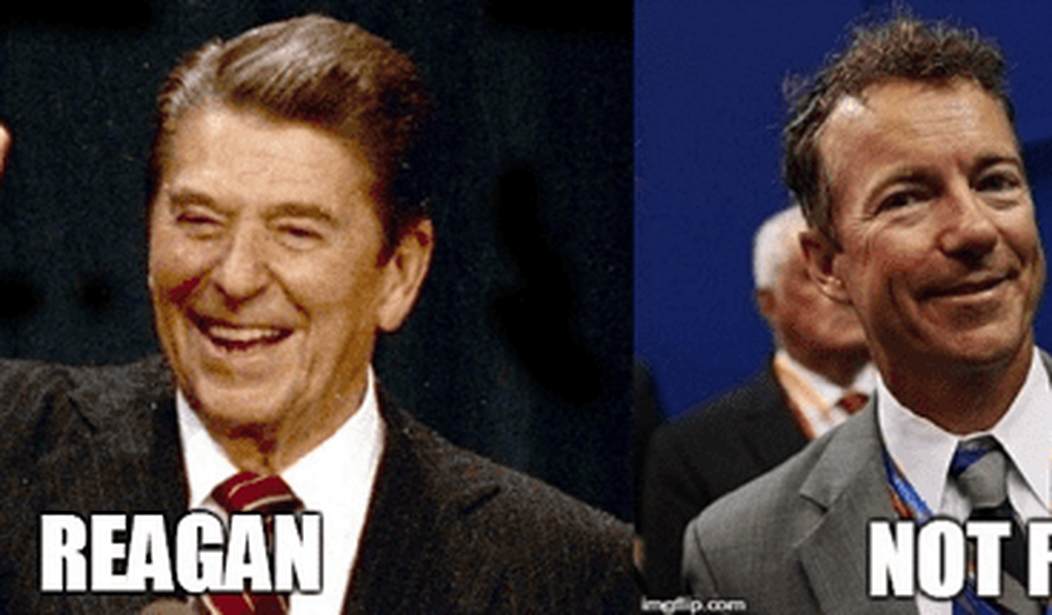
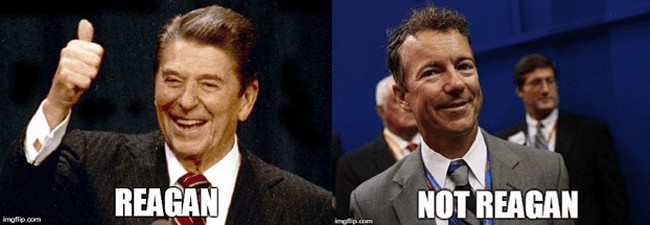

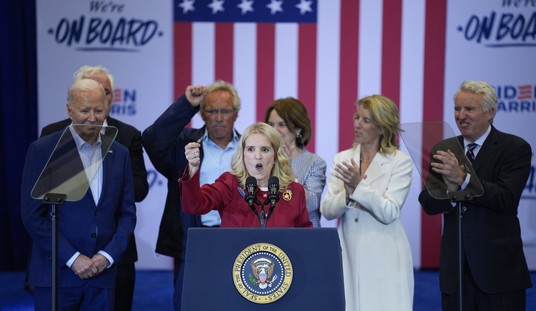


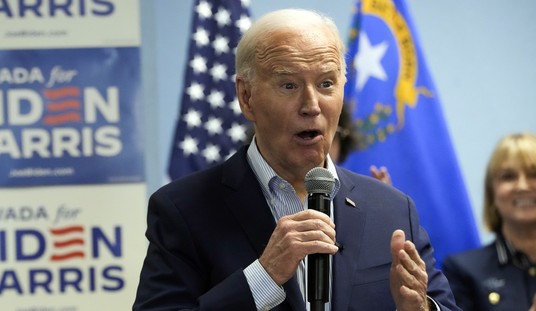
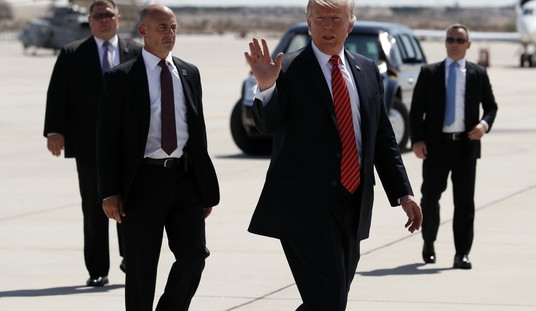


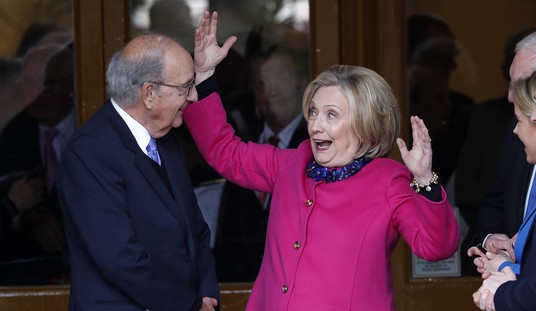


Join the conversation as a VIP Member